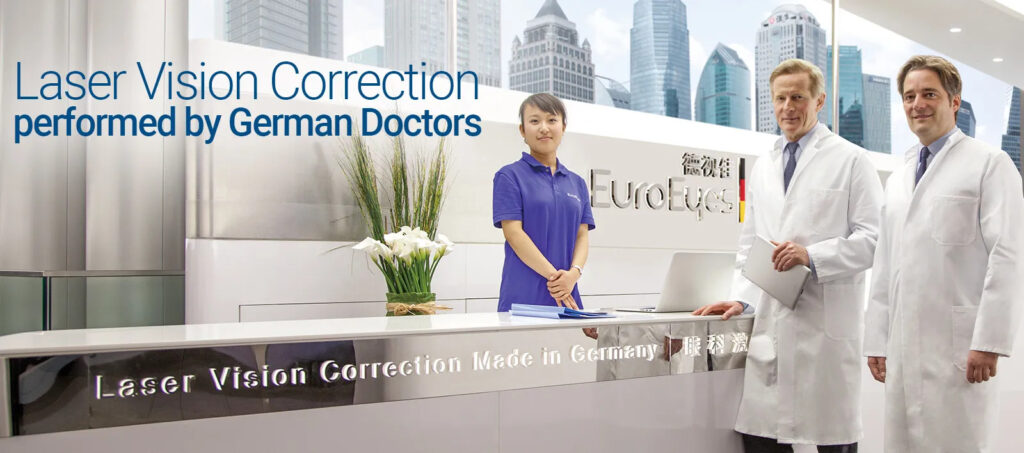Glaucoma in a Digital Age: Risks and Preventions
Introduction to Glaucoma
Glaucoma: a silent thief of sight that lurks in the shadows, often unnoticed until it’s too late. In this digital age where our eyes are constantly glued to screens, the risks and potential damage to our eye health have never been greater. As we immerse ourselves in a world of smartphones, tablets, and computers, it’s vital that we understand the impact these devices can have on our vision. Join us as we delve into the world of glaucoma and explore common risk factors, preventive measures, treatment options – all while emphasizing the importance of regular eye exams. So grab your reading glasses (or perhaps adjust your screen brightness) because there’s much to learn about safeguarding those precious peepers!
The Impact of Digital Devices on Eye Health
In today’s digital age, our lives are increasingly intertwined with technology. From smartphones to laptops and tablets, we spend hours each day staring at screens. While these devices have undoubtedly made our lives more convenient and connected, they also pose potential risks to our eye health.
One of the main concerns is the blue light emitted by digital screens. Studies suggest that prolonged exposure to this type of light can contribute to eyestrain, dryness, and even damage to the retina. The constant use of digital devices can also lead to a decrease in blink rate, causing dry eyes.
Moreover, spending excessive time on screens often leads us to engage in poor posture. We hunch over our phones or slouch in front of computer monitors for extended periods without realizing the strain it puts on our eyes and necks.
To mitigate these risks, there are some best practices you can adopt:
1) Take regular breaks: Follow the 20-20-20 rule – every 20 minutes look away from your screen for 20 seconds at something 20 feet away.
2) Adjust screen settings: Reduce brightness levels and increase text size for better visibility.
3) Use protective eyewear: Consider investing in blue-light-blocking glasses or filters for your devices.
4) Maintain proper posture: Sit up straight with your screen at eye level and ensure adequate lighting.
By being mindful of these factors and taking proactive steps towards maintaining good ocular health while using digital devices, you can minimize the impact they may have on your eyesight. Remember that prevention is always better than cure when it comes to preserving your vision!
Common Risk Factors for Glaucoma
Common Risk Factors for Glaucoma
Glaucoma is a complex eye condition that can cause irreversible damage to the optic nerve and lead to vision loss. While anyone can develop glaucoma, certain risk factors increase your chances of developing this sight-stealing disease.
Age is one of the primary risk factors for glaucoma. As you get older, your risk increases significantly. People over the age of 60 are at higher risk compared to younger individuals.
Family history also plays a role in the development of glaucoma. If you have a close relative with glaucoma, such as a parent or sibling, your risk may be higher than someone without a family history.
Ethnicity has been linked to an increased likelihood of developing certain types of glaucoma. For example, African Americans have a higher susceptibility to open-angle glaucoma compared to other ethnic groups.
Other medical conditions can contribute to the development of glaucoma as well. High blood pressure and diabetes are examples of conditions that can increase your vulnerability.
Furthermore, if you have had previous eye injuries or surgeries, you may be at greater risk for developing certain types of glaucoma later in life.
It’s important to note that these risk factors do not guarantee that you will develop glaucoma; they simply indicate an increased potential for it. However, being aware of these risks and taking proactive measures such as regular eye exams can help detect and manage any potential signs early on.
Stay tuned for our next blog section where we’ll discuss best practices for maintaining overall eye health!
Preventions and Best Practices for Maintaining Eye Health
Preventions and Best Practices for Maintaining Eye Health
When it comes to maintaining healthy eyes, prevention is key. Taking proactive steps to protect your vision can significantly reduce the risk of developing eye conditions like glaucoma. Here are some best practices you can incorporate into your daily routine:
1. Regular Eye Exams: Schedule comprehensive eye exams with an ophthalmologist or optometrist at least once a year. These exams help detect any early signs of glaucoma or other eye diseases.
2. Protect Your Eyes from UV Rays: Wear sunglasses that block out 100% of UVA and UVB rays when outdoors, as prolonged exposure to sunlight can increase the risk of developing cataracts.
3. Take Frequent Breaks from Digital Devices: Staring at screens for long periods can strain your eyes and potentially contribute to digital eye strain. Follow the 20-20-20 rule – every 20 minutes, take a break for 20 seconds and focus on something 20 feet away.
4. Maintain a Healthy Diet: Incorporate foods rich in vitamins C and E, omega-3 fatty acids, and antioxidants into your diet to support overall eye health.
5.
Sleep Well: Getting enough quality sleep allows your eyes to rest and rejuvenate.
6.
Exercise Regularly: Engaging in physical activity improves blood circulation throughout the body, including the eyes.
Remember, taking care of your overall health has a direct impact on your eye health too! By adopting these preventative measures into your lifestyle habits today, you’ll be safeguarding yourself against potential risks down the line
How to Recognize Symptoms of Glaucoma
Recognizing the symptoms of glaucoma is crucial for early detection and treatment. While it’s often referred to as the “silent thief of sight,” there are still some signs that may indicate its presence.
One common symptom of glaucoma is a gradual loss of peripheral vision. You may notice difficulty seeing objects or people on your side without turning your head. Another indicator could be frequent changes in your eyeglass prescription, even if you’ve recently had an eye exam.
Some individuals with glaucoma experience blurred or hazy vision, as well as increased sensitivity to light. If you notice these visual disturbances persistently, it’s essential to consult an eye care professional for further evaluation.
In some cases, glaucoma can cause severe eye pain accompanied by nausea and vomiting. If you’re experiencing any sudden and intense discomfort in your eyes along with other symptoms mentioned earlier, seek immediate medical attention.
Remember that these symptoms alone do not necessarily mean you have glaucoma; however, they should serve as red flags that prompt a comprehensive eye examination by a qualified optometrist or ophthalmologist.
By being aware of potential warning signs and seeking timely medical intervention when necessary, we can protect our precious vision from the harmful effects of this silent disease.
Treatment Options for Glaucoma
Treatment Options for Glaucoma
When it comes to treating glaucoma, there are various options available depending on the severity and type of glaucoma. The primary goal of treatment is to reduce intraocular pressure (IOP) and prevent further damage to the optic nerve.
Medication is often the first line of defense against glaucoma. Eye drops can help lower IOP by either reducing fluid production in the eye or increasing its drainage. These medications need to be used consistently as prescribed, as they play a crucial role in managing glaucoma.
In some cases, oral medications may be prescribed alongside or instead of eye drops. These medications work by reducing fluid production or improving drainage through different mechanisms.
If medication alone isn’t sufficient in controlling IOP, laser therapy may be recommended. Laser trabeculoplasty helps improve fluid outflow from the eye by using targeted laser energy to open clogged drainage channels.
For more advanced cases or when other treatments fail, surgery might be necessary. There are several surgical procedures available for glaucoma treatment, such as trabeculectomy and tube shunt implantation. These surgeries aim to create a new pathway for fluid drainage or reduce its production.
It’s important to note that while there are treatment options available for glaucoma management, early detection plays a vital role in preventing vision loss and minimizing long-term damage. Regular comprehensive eye exams are essential for detecting any signs of glaucoma before irreversible vision loss occurs.
Remember, each individual’s case varies regarding treatment plans and effectiveness; therefore, it’s crucial always consult with an ophthalmologist who can provide personalized recommendations based on your specific needs.
Conclusion and Importance of Regular Eye Exams
Regular eye exams are essential for maintaining good eye health and detecting potential issues like glaucoma early on. Glaucoma is a serious condition that can lead to irreversible vision loss if left untreated. By staying informed about the risks and symptoms of glaucoma, as well as adopting preventive measures, you can take proactive steps towards protecting your eyes.
Remember, the digital age has brought about new challenges to our eye health due to increased screen time and exposure to blue light. It’s crucial to be mindful of these factors and make necessary adjustments in our daily routines.
If you experience any symptoms such as blurred vision, eye pain or redness, halos around lights, or changes in peripheral vision, it’s important not to ignore them. Consult with an ophthalmologist who can diagnose whether you have glaucoma or any other underlying condition.
Treatment options for glaucoma may include medication (eye drops), laser therapy, or surgery depending on the severity of the case. Your doctor will recommend the most suitable course of action after careful evaluation.
In conclusion (without using “in conclusion”), prioritizing regular eye exams is vital for everyone – regardless of age or existing conditions. Early detection and timely treatment play a significant role in managing glaucoma effectively while minimizing its impact on your vision.
Take care of your eyes by incorporating healthy habits into your lifestyle: maintain a balanced diet rich in antioxidants and nutrients beneficial for eye health; practice proper posture when using digital devices; implement regular breaks from screens; use protective eyewear when needed; and manage stress levels through relaxation techniques.
By being proactive about caring for your eyes and seeking professional guidance when needed, you can reduce the risks associated with glaucoma and safeguard your precious gift of sight. Remember: prevention is always better than cure!



